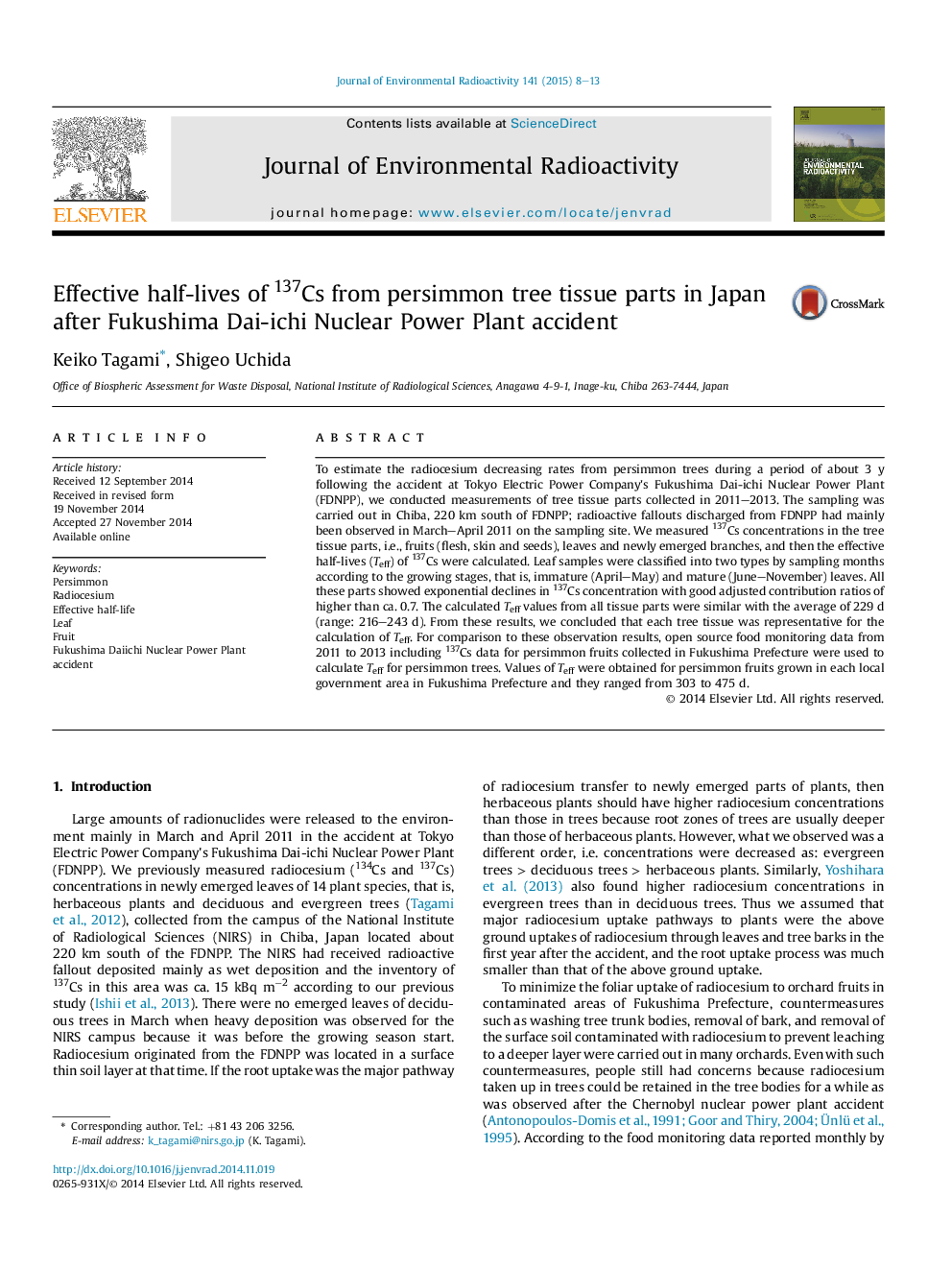| Article ID | Journal | Published Year | Pages | File Type |
|---|---|---|---|---|
| 8082372 | Journal of Environmental Radioactivity | 2015 | 6 Pages |
Abstract
To estimate the radiocesium decreasing rates from persimmon trees during a period of about 3Â y following the accident at Tokyo Electric Power Company's Fukushima Dai-ichi Nuclear Power Plant (FDNPP), we conducted measurements of tree tissue parts collected in 2011-2013. The sampling was carried out in Chiba, 220Â km south of FDNPP; radioactive fallouts discharged from FDNPP had mainly been observed in March-April 2011 on the sampling site. We measured 137Cs concentrations in the tree tissue parts, i.e., fruits (flesh, skin and seeds), leaves and newly emerged branches, and then the effective half-lives (Teff) of 137Cs were calculated. Leaf samples were classified into two types by sampling months according to the growing stages, that is, immature (April-May) and mature (June-November) leaves. All these parts showed exponential declines in 137Cs concentration with good adjusted contribution ratios of higher than ca. 0.7. The calculated Teff values from all tissue parts were similar with the average of 229Â d (range: 216-243Â d). From these results, we concluded that each tree tissue was representative for the calculation of Teff. For comparison to these observation results, open source food monitoring data from 2011 to 2013 including 137Cs data for persimmon fruits collected in Fukushima Prefecture were used to calculate Teff for persimmon trees. Values of Teff were obtained for persimmon fruits grown in each local government area in Fukushima Prefecture and they ranged from 303 to 475Â d.
Keywords
Related Topics
Physical Sciences and Engineering
Energy
Nuclear Energy and Engineering
Authors
Keiko Tagami, Shigeo Uchida,
